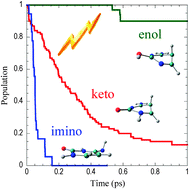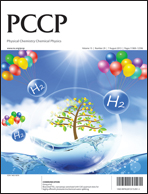A comprehensive picture of the ultrafast nonradiative decay mechanisms of three cytosine tautomers (amino-keto, imino-keto, and amino-enol forms) is revealed by high-level ab initio potential energy calculations using the multistate (MS) CASPT2 method and also by on-the-fly excited-state molecular dynamics simulations employing the CASSCF method. To obtain a reliable potential energy profile along the deactivation pathways, the MS-CASPT2 method is employed even for the optimization of minimum energy structures in the excited state and conical intersection (CI) structures between the ground and excited states. In the imino (imino-keto) form, we locate a new CI structure involving the twisting of the imino group, and the decay pathway leading to this CI is found to be barrierless, suggesting a remarkably efficient deactivation of imino cytosine. In the keto (amino-keto) form, the MS-CASPT2 calculations exhibit an efficient decay path to the ethylene-like CI involving the twisting of the C–C double bond in the six-membered ring, with a barrier of ∼0.08 eV from the minimum of the 1ππ* state. In the enol (amino-enol) form, three types of CIs are identified for the first time. Among them, the ethylene-like CI with a similar molecular structure to the keto form provides the most preferred deactivation pathway in enol cytosine. This pathway exhibits a higher barrier of ∼0.22 eV and a higher energy of CI than those of keto cytosine. Nonadiabatic molecular dynamics simulations provide a time-dependent picture of the deactivation processes, including the excited-state lifetime of each tautomer. In particular, the decay time of the imino tautomer is predicted to be only ∼100 fs. Our computational results are in remarkably good agreement with the experimental findings of recent femtosecond pump–probe photoionization spectroscopy [J. Am. Chem. Soc., 2009, 131, 16939; J. Phys. Chem. A, 2011, 115, 8406], supporting the coexistence of more than one tautomer in the photophysics of isolated cytosine and that each tautomer exhibits a different excited-state lifetime.


 Please wait while we load your content...
Please wait while we load your content...